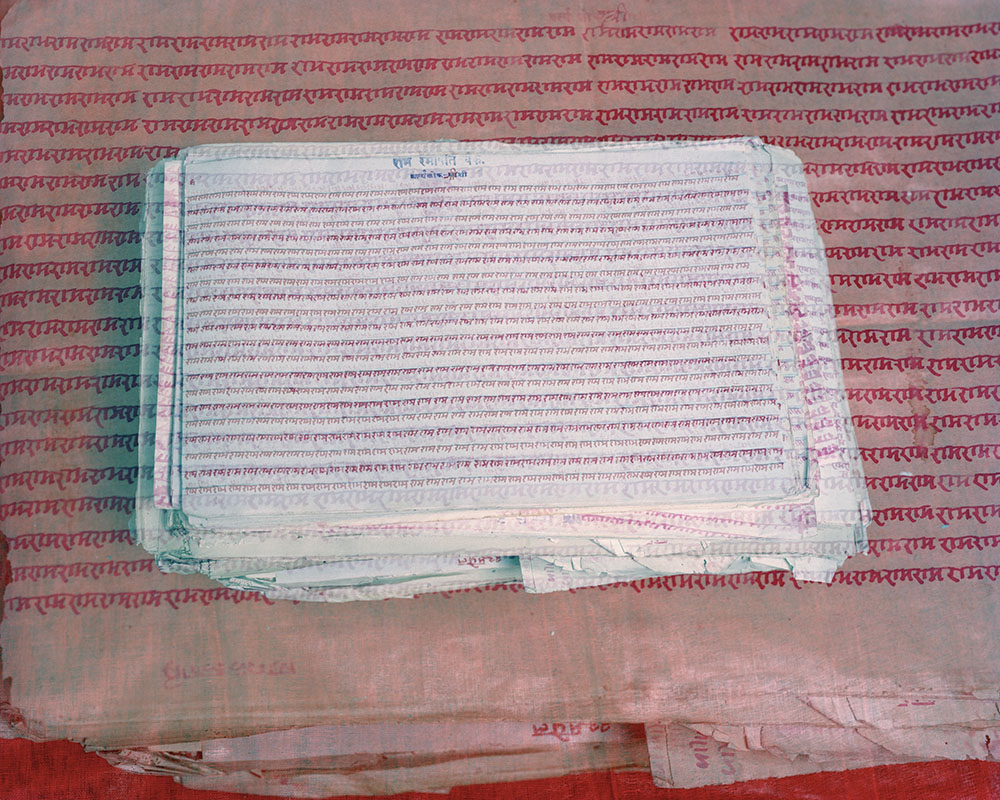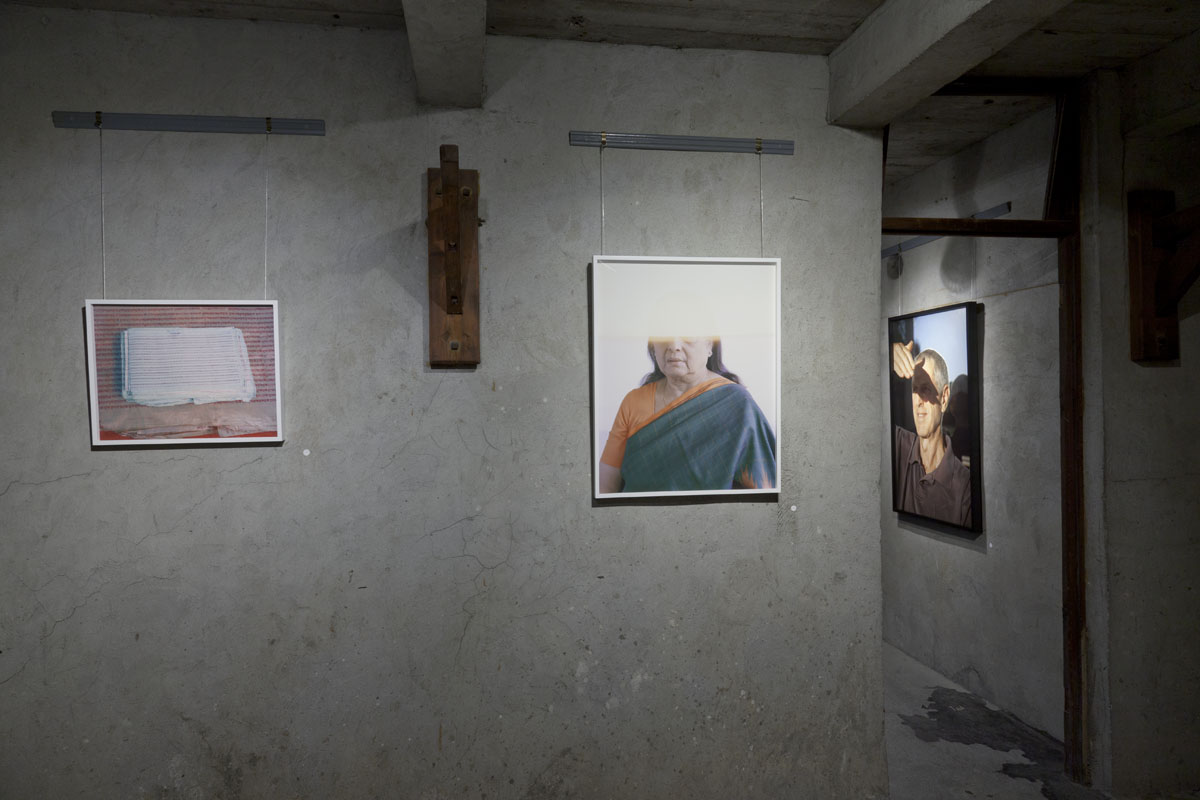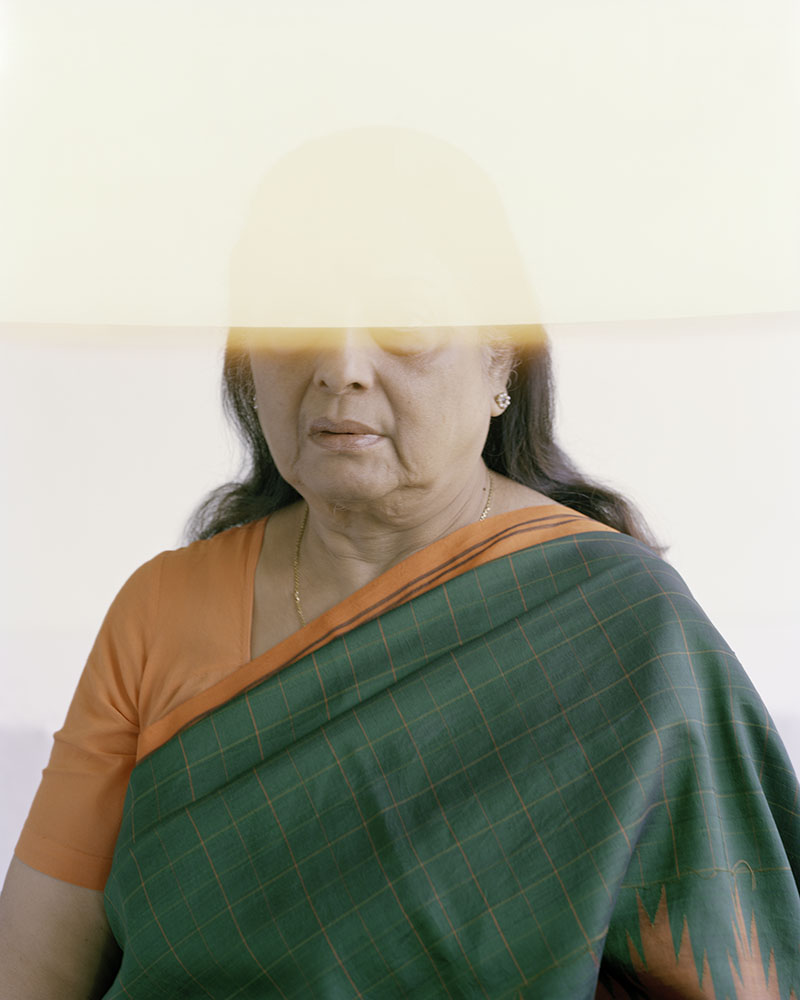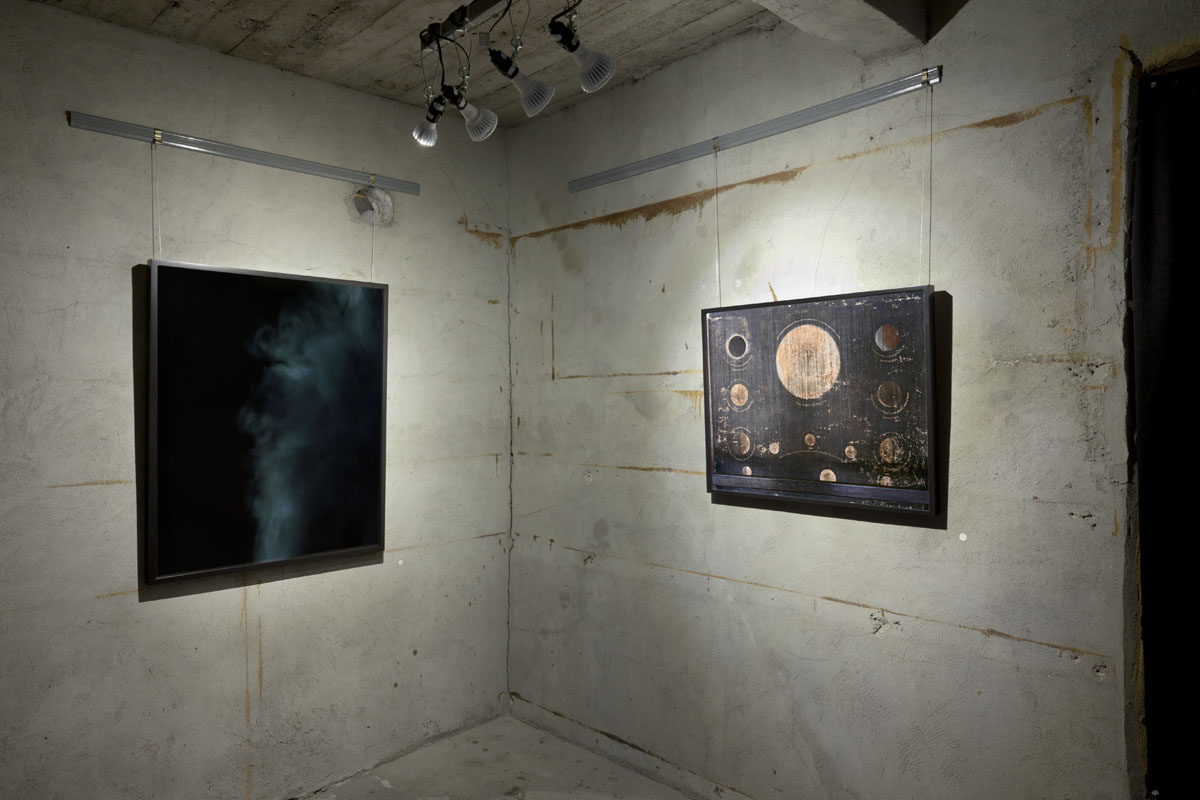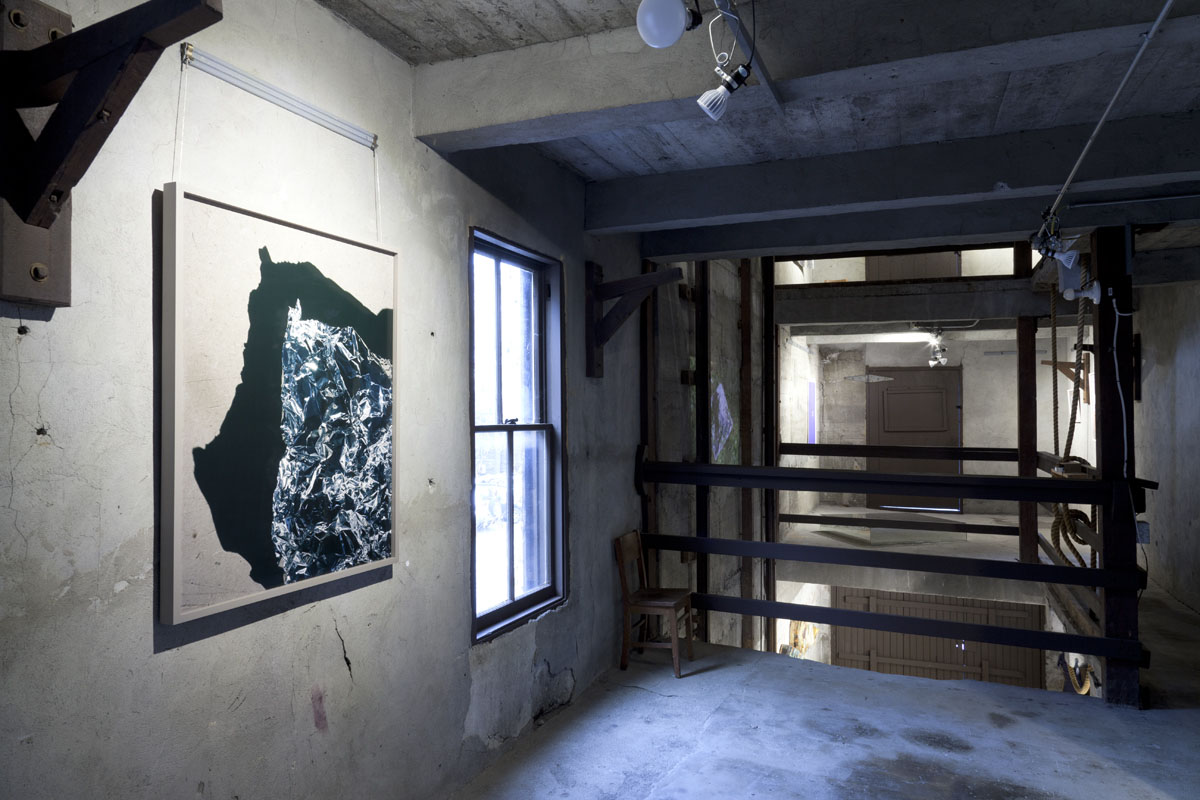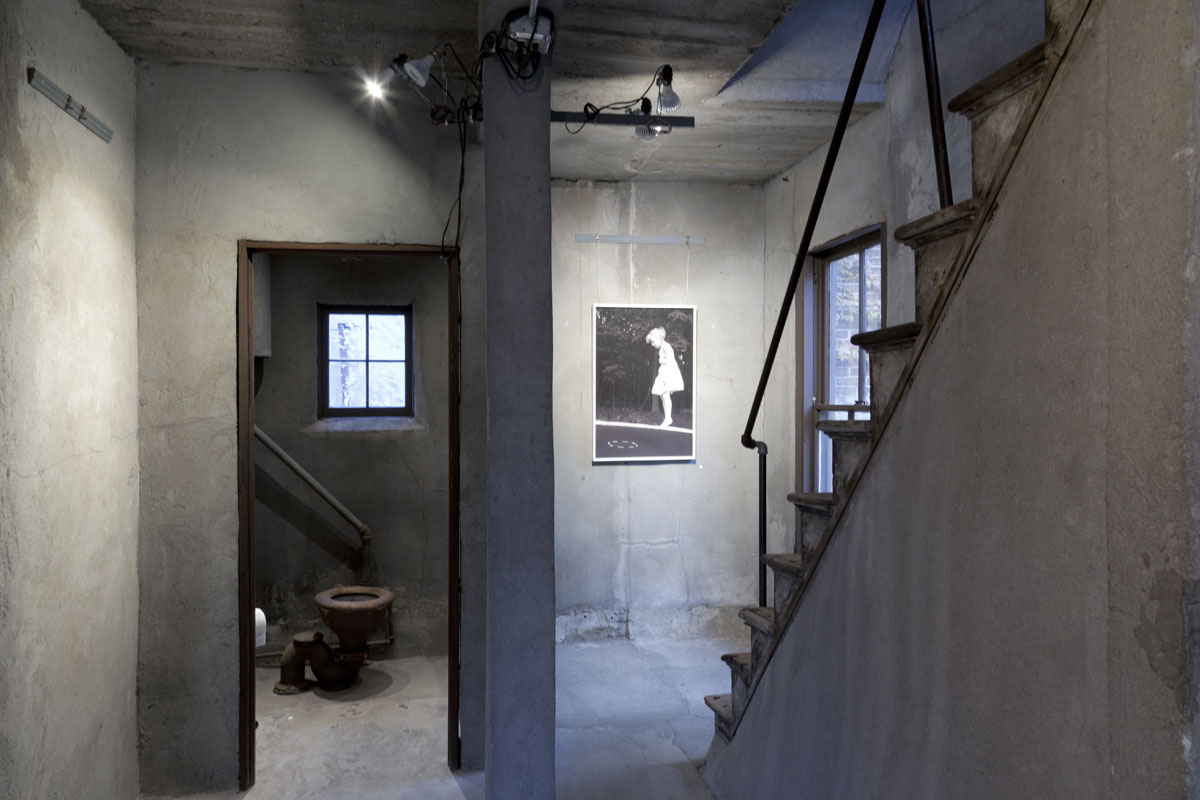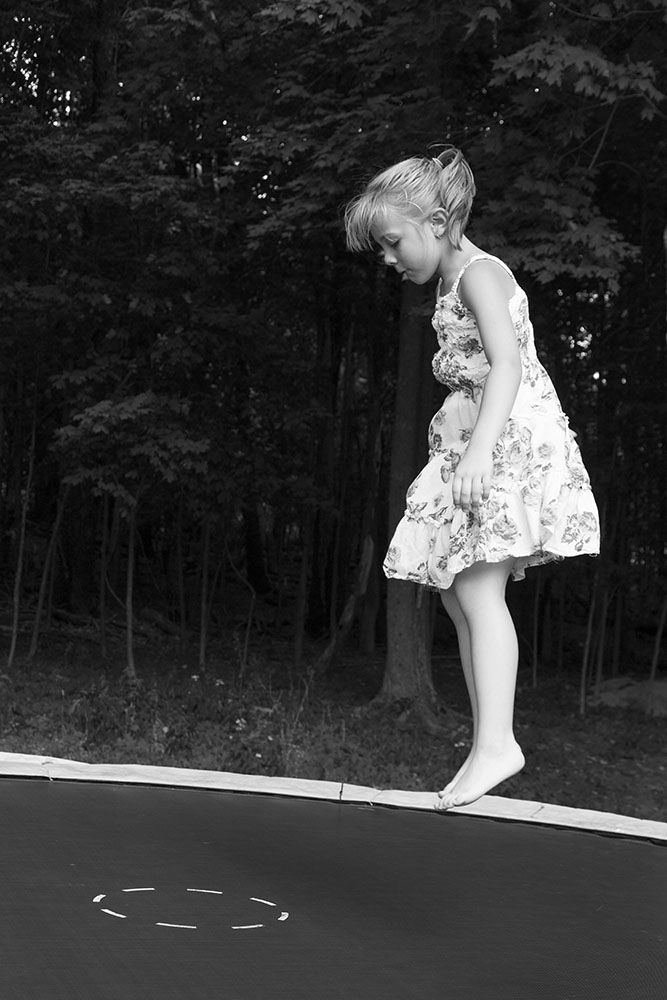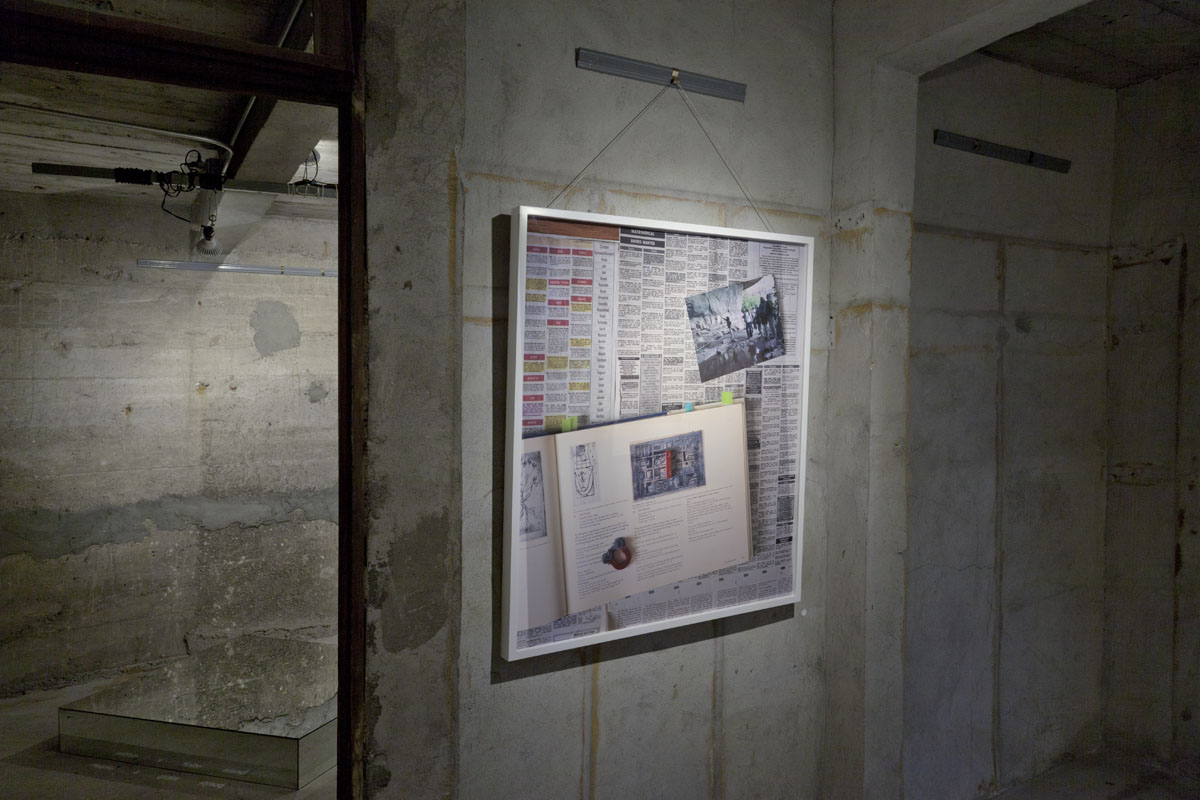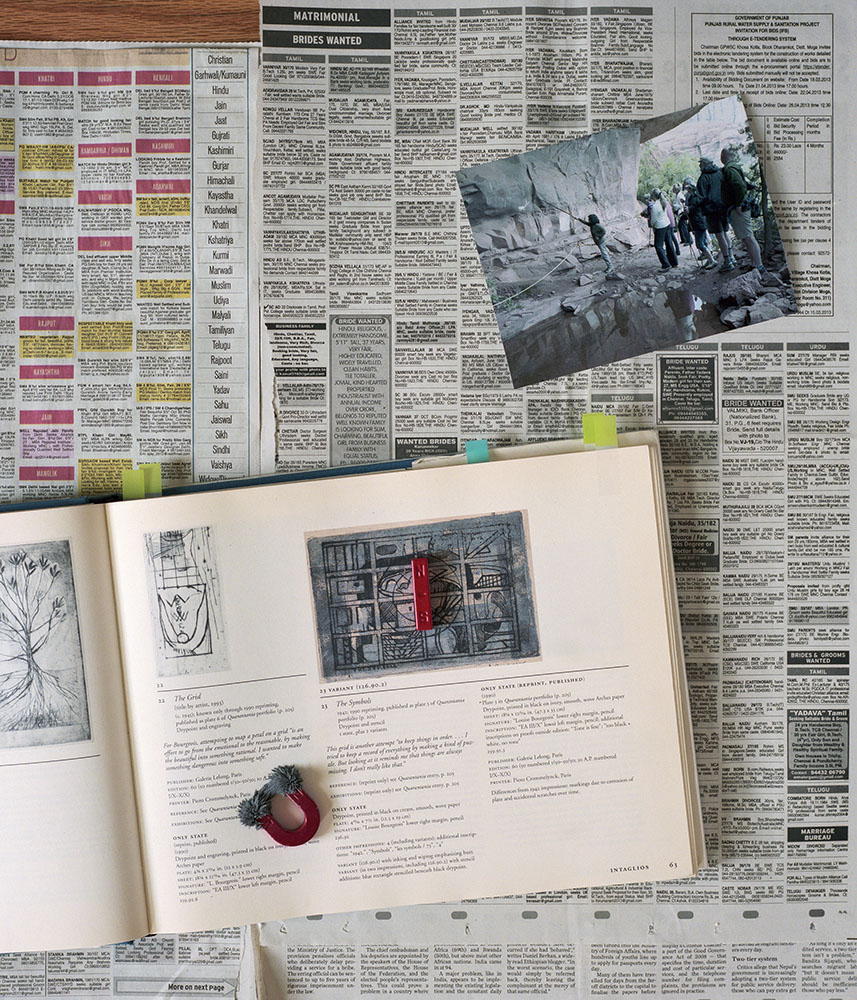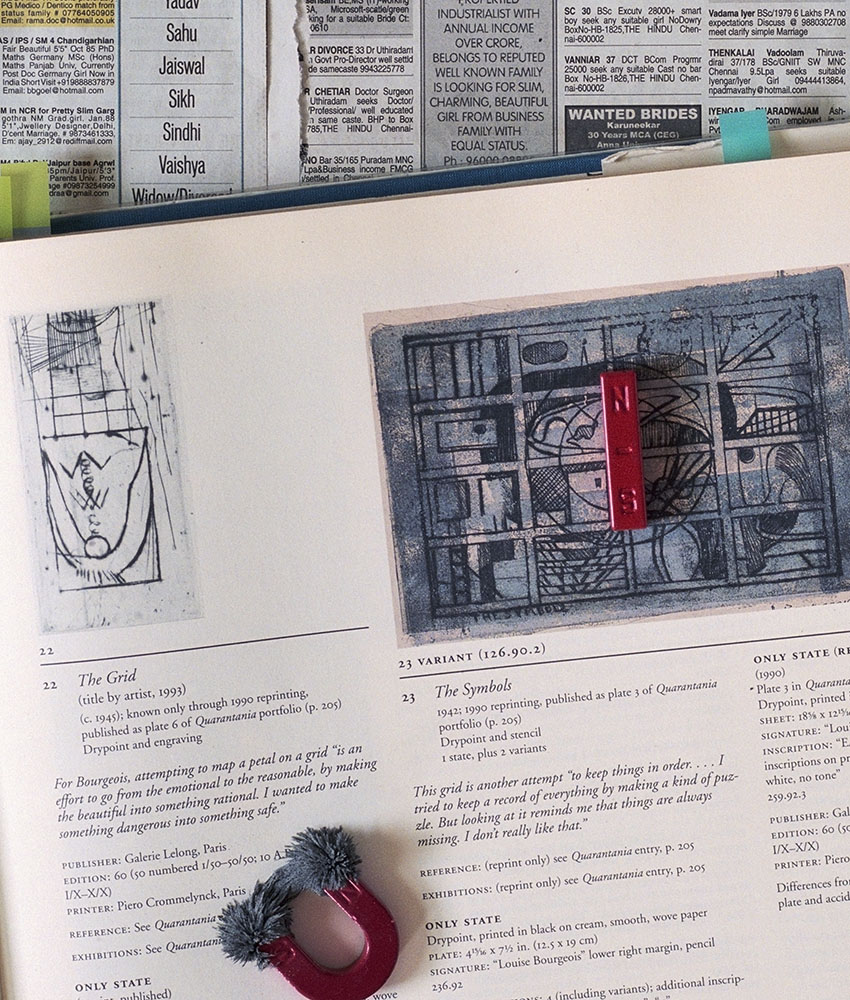WHEN MOUNTAINS RISE AND FALL LIKE WAVES
Louise Bourgeois talks of the unconscious and attempts to draw a petal on a grid. The grid and the unconscious are so far apart that a spacious ground emerges between them. This body of work finds the opposites only to discover that the distance between them is contingent on where one stands. It uses signifiers of elusive and boundless alongside the human impulse to classify and frame. Mountains a symbol of immovability, when considered in a larger time span of 100,000 or more years, seemingly rise and fall like waves. Like temporality the perception of scale is subjective too. The image of silver foil that shares the title of the series, eludes any reference to how large or small it might be. The conscious omission of measurability is a characteristic of photographic abstraction itself.
At the time of photographing my mother, we were going through a particularly difficult time in our relationship. I had married my long time partner (another woman) and returned to see my parents. My mother felt that I betrayed the purity of marriage. Our time together was filled with silence. To sit her down for a portrait and look at her through the ground glass of the glossy cherry wood camera was a setting where she was aware of my single-minded attention towards her. I too stared at her inverted eyes looking straight into the glass but without direct engagement. The camera became a mediator. And the lack of confrontation allowed for a different ‘looking’ one that was more considerate. When the image was processed, incidentally it was the eyes that were obliterated.



